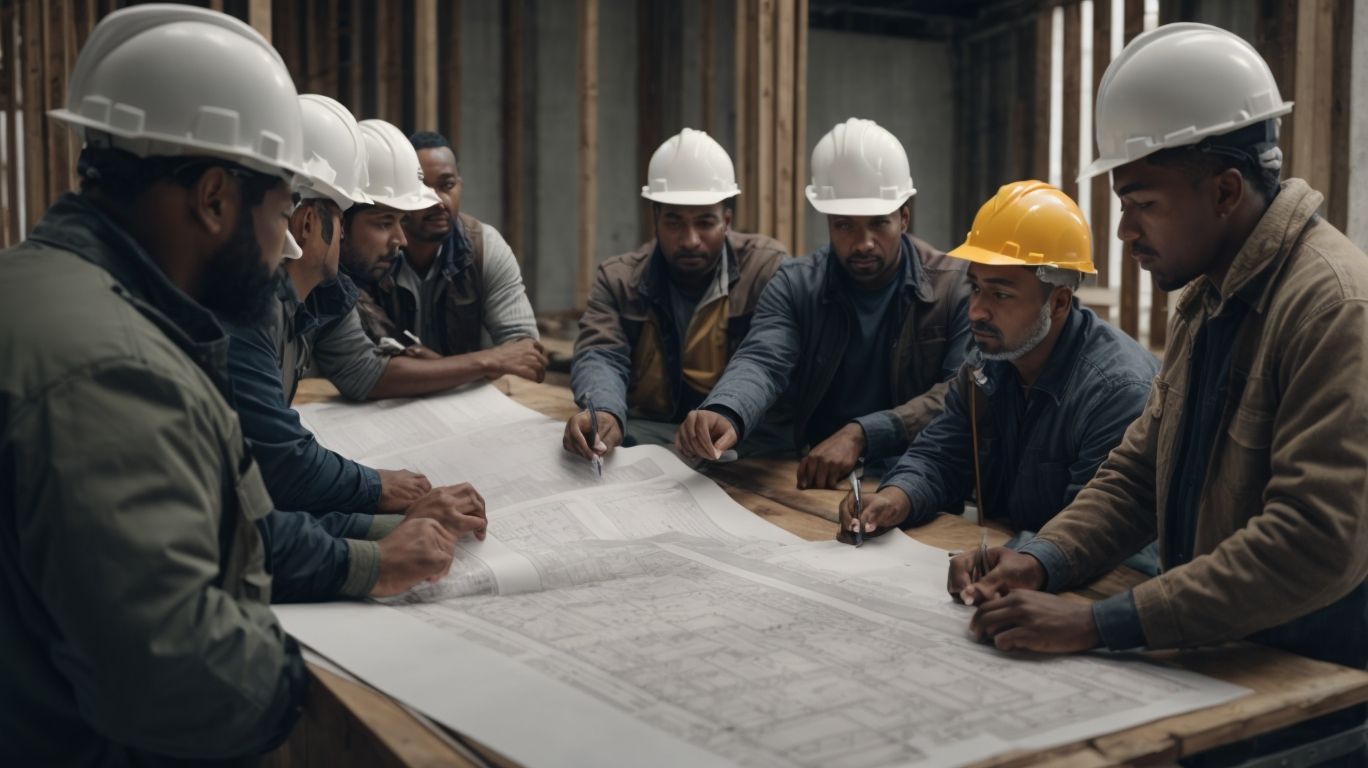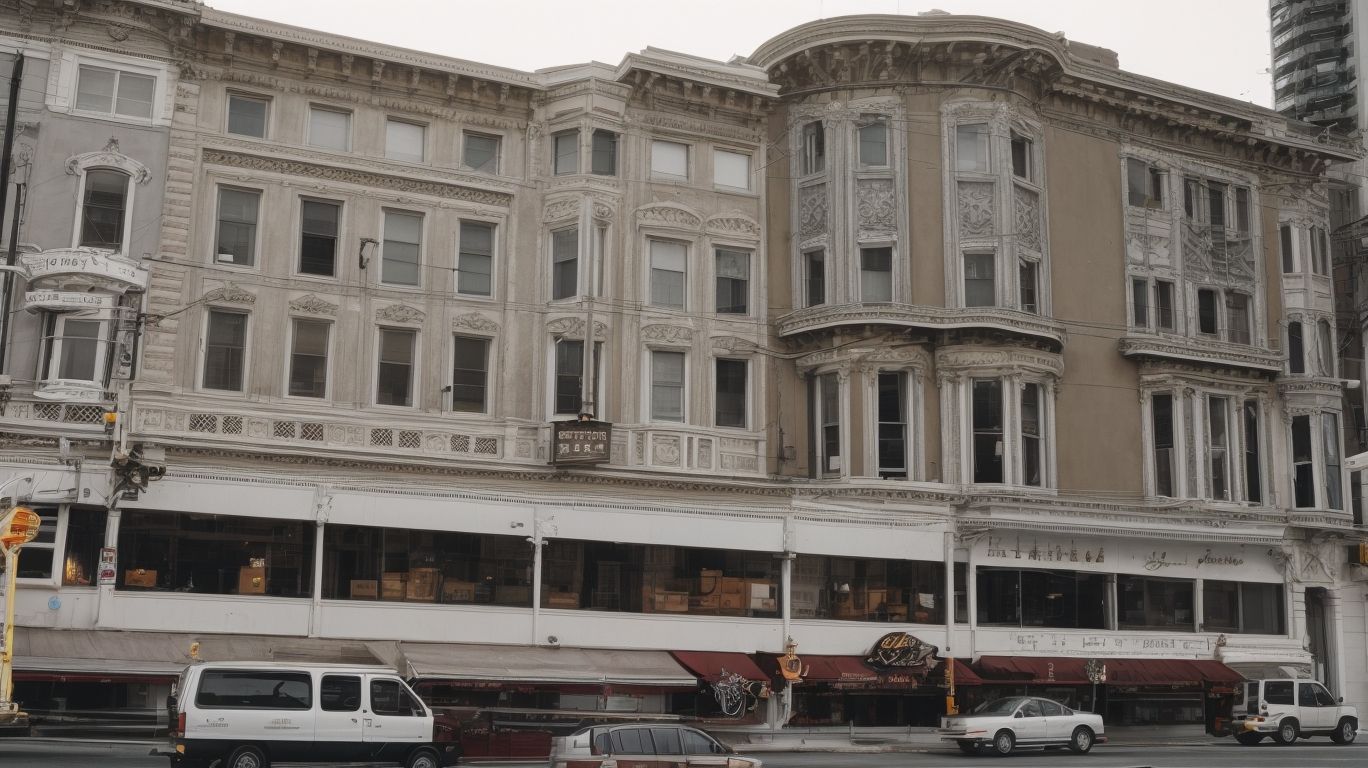
Choosing the Right Soft-Story Retrofit Contractor in SF
Are you a property owner in San Francisco considering a soft-story retrofit for your building? If so, it’s crucial to find the right contractor for the job. In this article, we’ll explore the qualifications to look for in a soft-story retrofit contractor, how to find potential contractors in San Francisco, and the important questions to ask during the interview process. We’ll also discuss what to look for in a contract with a soft-story retrofit contractor.
Whether you’re new to the process or looking to switch contractors, this guide will help you make an informed decision for your retrofit project.
What is Soft-Story Retrofitting?
Soft-story retrofitting is a structural reinforcement technique that addresses the vulnerability of multi-story buildings with weak or open front wall conditions, known as ‘soft stories’, to seismic events.
This method aims to enhance the structural integrity of buildings and reduce the risk of collapse or extensive damage during earthquakes. It involves modifying the existing structure by adding reinforced steel frames, shear walls, or other structural elements to improve the building’s ability to withstand seismic forces.
The design of the retrofit, choice of materials, and seismic risk assessment are crucial factors in ensuring the effectiveness of the retrofitting process. By implementing soft-story retrofitting, buildings can significantly improve their resilience to seismic events, ultimately contributing to public safety and mitigating damage to property and infrastructure.
Why is Soft-Story Retrofitting Important in San Francisco?
Soft-story retrofitting holds particular significance in San Francisco due to the city’s high seismic vulnerability and the potential impact of earthquakes on multi-story buildings. This emphasizes the need to enhance building safety and mitigate seismic risk through retrofitting measures.
The seismic vulnerability of San Francisco is well-documented, with the city being situated along the notorious San Andreas Fault. Multi-story buildings in the city face specific risks during earthquakes due to their structural characteristics, such as soft, weak, or open front stories. These features can lead to significant damage and collapse during seismic events.
To address this vulnerability, San Francisco has implemented retrofitting requirements, emphasizing the need for property owners to strengthen their buildings against seismic forces by retrofitting their soft-story structures.
What are the Qualifications to Look for in a Soft-Story Retrofit Contractor?
When selecting a soft-story retrofit contractor, it is crucial to assess their qualifications, including project experience, customer reviews, and expertise in designing and implementing retrofit solutions that prioritize building safety and address seismic risk assessment.
When selecting a contractor for a soft-story retrofit project, it’s important to consider their experience in managing similar projects and their track record of successful installations. Additionally, their ability to conduct thorough seismic risk assessments is a key qualification to look for.
Another important factor is the contractor’s knowledge of local building codes and regulations. This, coupled with their ability to effectively communicate and collaborate with engineers and architects, plays a vital role in ensuring the success of the retrofit project.
License and Insurance
The first qualification to evaluate in a soft-story retrofit contractor is their possession of valid licenses and insurance, ensuring compliance with building codes and regulations, as well as the ability to obtain necessary building permits.
Contractor licenses are a crucial indicator of their expertise and ability to adhere to safety and quality regulations in construction work. Additionally, having insurance coverage provides protection against potential liabilities and ensures proper handling of accidents or damages during the project. This also showcases the contractor’s dedication to maintaining a safe working environment and providing financial security for all parties involved.
Experience and Expertise
The experience and expertise of a soft-story retrofit contractor are vital considerations, with a focus on assessing their past project experience and the involvement of qualified structural engineers in their team.
A contractor’s experience in soft-story retrofitting directly influences the success of the project. Their ability to understand complex structural issues and navigate the intricate process of retrofitting is essential.
Having a team of skilled structural engineers is crucial for ensuring the safety and resilience of the structure. When evaluating a contractor, one should prioritize their track record of successful retrofits and their capability to manage unforeseen challenges. This demonstrates their aptitude in delivering effective and durable solutions, which is invaluable in safeguarding buildings against seismic hazards.
Knowledge of Local Building Codes
A proficient soft-story retrofit contractor must demonstrate in-depth knowledge of local building codes, regulations, and an understanding of the specific seismic vulnerability factors relevant to the project location.
This expertise is crucial for ensuring that the retrofitting process complies with the regulatory requirements and addresses the unique seismic risks that the building may face.
By incorporating seismic considerations into the retrofit design, the contractor can implement tailored solutions that enhance the structure’s resilience against potential earthquakes.
An awareness of the local building codes also enables the contractor to navigate permitting processes efficiently, avoiding delays and ensuring that the retrofit project progresses smoothly within the legal framework.
How to Find Potential Soft-Story Retrofit Contractors in San Francisco?
Identifying potential soft-story retrofit contractors in San Francisco can be accomplished through various methods, including online searches and leveraging local business directories to access a comprehensive list of qualified contractors with the necessary credentials and expertise.
Homeowners and property managers can benefit from utilizing online platforms to find contractors for soft-story retrofitting in San Francisco. These platforms offer detailed profiles, portfolios, and customer reviews to assess the quality of work and satisfaction levels of previous clients.
Additionally, using online search platforms and local directories allows for easy comparison of services, pricing, and specializations, making it easier to narrow down the options and find the most suitable contractor for the job.
Online Search
Conducting an online search for soft-story retrofit contractors in San Francisco allows access to a diverse pool of professionals specializing in seismic retrofitting, providing an opportunity to assess their qualifications and expertise.
Individuals can easily find skilled soft-story retrofit contractors in San Francisco by searching for relevant keywords on search engines or dedicated platforms. These contractors specialize in addressing seismic risks and improving building resilience. It is important to evaluate the credibility of these contractors by considering their experience, certifications, and customer reviews. This ensures a reliable and effective retrofitting solution that meets the unique requirements of the property.
Referrals from Friends and Family
Seeking referrals from friends and family in San Francisco can provide valuable insights into potential soft-story retrofit contractors, leveraging personal experiences to evaluate the qualifications of contractors in addressing seismic vulnerability and delivering quality retrofit solutions.
Local connections in San Francisco can offer firsthand information about the reliability, professionalism, and effectiveness of contractors. This can significantly streamline the selection process for homeowners.
By tapping into a network of trusted resources, homeowners can find qualified professionals who understand the unique seismic considerations of the San Francisco area. Referrals often lead to a smoother communication process and foster a sense of accountability. Contractors are aware that their work is being assessed based on real, local experiences.
Local Business Directories
Utilizing local business directories in San Francisco facilitates the identification of licensed and qualified soft-story retrofit contractors, streamlining the process of accessing essential information, including credentials, project experience, and the ability to secure required building permits.
This enables property owners to review comprehensive profiles of contractors, helping them make informed decisions based on the contractors’ expertise in seismic retrofitting, adherence to San Francisco building codes, and successful completion of similar projects.
The detailed information available in these directories also aids in verifying the contractors’ insurance coverage and bonding, ensuring a reliable and risk-free partnership throughout the retrofit process. These directories often feature customer reviews and ratings, offering valuable insights into the contractors’ quality of work and customer satisfaction, reinforcing the significance of local business directories as a crucial resource for securing trustworthy and competent soft-story retrofit contractors in San Francisco.
What Questions Should You Ask When Interviewing a Soft-Story Retrofit Contractor?
Interviewing a soft-story retrofit contractor requires asking pertinent questions pertaining to their project experience, estimated retrofit costs, handling of building permits, and the approach to comprehensive building inspections.
When considering a contractor for a soft-story retrofit, it’s important to understand their previous experience with similar projects. This can give valuable insights into their proficiency and ability to handle complexities. It’s also wise to inquire about estimated costs to assess financial feasibility and avoid unexpected expenses. Additionally, discussing the contractor’s approach to obtaining building permits and conducting thorough inspections can showcase their understanding of legal and safety aspects, ultimately contributing to a successful project completion.
How Many Soft-Story Retrofit Projects Have You Completed?
Inquiring about the completed number of soft-story retrofit projects is crucial to assess a contractor’s project experience and their commitment to enhancing building safety through retrofitting endeavors.
This evaluation provides valuable insights into the contractor’s familiarity with the specific challenges and requirements of soft-story retrofits, as well as their proficiency in implementing effective safety measures.
By examining their track record, clients can gauge the level of expertise and reliability the contractor brings to such projects, ensuring the structural integrity and safety of the building for years to come.
Understanding the impact of these retrofits on building safety reinforces the significance of choosing an experienced contractor with a proven history of successful soft-story retrofit completions.
What is Your Estimated Timeline for the Project?
Understanding the contractor’s estimated timeline for the soft-story retrofit project is essential to assess their construction expertise, the integration of seismic risk assessment, and the ability to deliver within a reasonable timeframe based on their project experience.
A reliable contractor with extensive project experience understands the importance of timely and effective retrofit solutions. This directly impacts the safety and security of the building. By integrating seismic risk assessment into their construction plans, they mitigate potential hazards and ensure the long-term stability of the structure.
Their ability to adhere to projected timelines showcases their organizational skills and competence, contributing to the successful completion of the retrofit project within the stipulated timeframe.
Can You Provide a Detailed Cost Breakdown?
Requesting a comprehensive cost breakdown from the contractor facilitates an assessment of the financial aspects of the soft-story retrofit, emphasizing the impact of costs on addressing seismic vulnerability and prioritizing building safety.
Building owners can gain a clear understanding of the expenses involved in implementing structural reinforcements, strengthening the foundation, and securing vulnerable structural elements. This detailed breakdown aids in making informed financial decisions and ensures that resources are allocated effectively to mitigate seismic risks and enhance building safety.
By analyzing the cost breakdown, property owners can also compare different retrofit options and select the most suitable solution that balances effectiveness and cost-efficiency.
How Will You Handle Permits and Inspections?
Understanding the contractor’s approach to handling building permits and conducting comprehensive inspections is crucial, ensuring adherence to regulations and the seamless completion of necessary procedural requirements.
This approach is integral in guaranteeing that the project meets all legal requirements and safety standards, providing assurance to both the homeowners and the authorities.
By carefully navigating the complexities of obtaining building permits and diligently carrying out thorough inspections, the contractor showcases their commitment to regulatory compliance, thus safeguarding the structural integrity and overall quality of the construction.
This not only enhances the credibility and trustworthiness of the contractor but also fosters a sense of confidence in the successful execution of the construction project.
What Should You Look for in a Contract with a Soft-Story Retrofit Contractor?
When finalizing a contract with a soft-story retrofit contractor, it is essential to prioritize aspects such as the detailed scope of work, construction expertise, adherence to retrofit design specifications, and the inclusion of warranty and guarantees for the completed project.
When hiring a contractor for a retrofit project, it’s essential to clearly communicate the specific requirements and expectations. This includes evaluating their expertise in similar construction projects. Compliance with retrofit design specifications should also be emphasized to ensure structural integrity and safety. Additionally, it’s important to include a comprehensive warranty and guarantees in the contract for added assurance of quality workmanship and materials.
Scope of Work
The contract should encompass a detailed scope of work, incorporating retrofit design specifications, compliance with building codes, and the provision of warranty to ensure the comprehensive coverage of the retrofitting project.
This comprehensive scope of work is vital as it forms the foundation for the entire project. It details the specific requirements and deliverables, ensuring a clear understanding for all parties involved.
By integrating retrofit design specifications, the contract ensures that the project aligns with the latest industry standards and best practices. Adherence to building codes is crucial for the safety and structural integrity of the retrofitting work. Including a warranty in the contract provides reassurance about the quality and longevity of the completed project. This holistic approach sets a solid framework for a successful retrofitting endeavor.
Timeline and Milestones
The contract should clearly outline the construction timeline and associated milestones, reflecting the contractor’s commitment to project delivery based on their project experience and expertise in managing retrofitting endeavors.
This strategic approach demonstrates the contractor’s ability to plan, execute, and complete retrofit solutions within specified timeframes, highlighting their project management capabilities.
The delineation of milestones fosters transparency and accountability, enabling all involved parties to track progress and ensure timely completion. A comprehensive timeline and milestones also indicate the contractor’s diligent consideration of potential challenges and their proactive approach to mitigate any delays, underscoring their commitment to delivering the project on schedule.
Payment Schedule
Establishing a clear payment schedule within the contract ensures transparency and accountability, reflecting the contractor’s construction expertise and the structured approach to managing the financial aspects of the retrofit project.
This transparency in payment arrangements not only demonstrates the contractor’s understanding of retrofit costs and the necessary cash flow for the project but also fosters trust and confidence between both parties.
It allows clients to have a clear understanding of when payments are due, aligning with project milestones and ensuring that the financial aspect of the construction process is well-managed.
A well-defined payment schedule also indicates the contractor’s commitment to on-time project delivery and their financial responsibility in overseeing the effective utilization of funds for the retrofit project.
Warranty and Guarantees
The inclusion of comprehensive warranty and guarantees in the contract signifies the contractor’s commitment to ensuring building safety and the provision of long-term assurances for the quality and integrity of the retrofit work.
This act instills confidence in the building occupants and owners, providing them peace of mind knowing that the retrofit work is backed by robust assurances.
Comprehensive warranties cover a wide array of potential issues that may arise, from material defects to workmanship errors, ensuring that any unforeseen problems are promptly addressed.
Such measures not only safeguard the building’s occupants but also serve as a testament to the contractor’s dedication to delivering high-quality, safe retrofit solutions.




No Comments